ABC – Laura Montero Carretero – 03/11/2024
The vast potential of the multiplier effect of AI algorithms is opening up a new economic opportunity, one that global giants have already embraced and around which the thriving Spanish sector is beginning to establish its position.
Artificial intelligence has found a fertile ground to conquer in biotechnology. Its ability to process vast amounts of data, recognize patterns, and make forecasts has the potential to revolutionize the sector as we know it, optimizing processes, accelerating drug discovery, and aiding in the design of personalized treatments. We’re talking about systems that have all the elements to create a watershed moment in this discipline, which is crucial for addressing challenges related to human health, agriculture, and the environment. This potential has not gone unnoticed by the research community or the business sector, both of which are striving to leverage the competitive advantages offered by the convergence of these two fields. Some of the world’s largest companies have already made strategic moves. Microprocessor giant Nvidia, valued at $3.271 trillion, announced earlier this year that it had invested $76 million in U.S.-based Recursion Pharmaceuticals, which claims on its website to be “leveraging new technology to create virtuous learning cycles around data sets to build a next-generation biopharmaceutical company.” DeepMind, Alphabet’s (Google’s) artificial intelligence subsidiary, quickly recognized the role algorithms could play in helping to understand the biology of living organisms. In 2018, it launched AlphaFold, a tool that has achieved remarkable results by determining the three-dimensional structures of 200 million proteins, practically all that are known. Its latest creation, presented in May, marked a new milestone: predicting the structure and interactions of all molecules of life with unprecedented accuracy. According to the company, Isomorphic Labs, a research lab associated with DeepMind, is already working with several pharmaceutical companies to capitalize on AlphaFold 3’s potential, aiming to apply it to real-world drug design challenges and ultimately develop new treatments that make a meaningful difference for patients. The scientific community has celebrated these advances, with DeepMind’s Demis Hassabis and John Jumper recently awarded the 2024 Nobel Prize in Chemistry for their work.
Artificial intelligence has become a driving force for innovation in biotechnology and has sparked significant business interest. And rightly so. A Morgan Stanley Research report from a couple of years ago predicted that improvements in early-stage drug development success rates, driven by AI and machine learning, could lead to an additional 50 novel therapies over a decade, translating into an opportunity exceeding $50 billion. The firm also estimated that the average investment needed to bring a new drug to market is nearly $1 billion, while the actual R&D cost can reach $2.5 billion per commercialized therapy when considering abandoned trials and clinical failures. The study concludes that AI-driven savings could offer significant value.
We are on the brink of a paradigm shift in the sector. Jorge Tello, coordinator of the Artificial Intelligence and New Technologies Working Group at AseBio, the Spanish Association of Bioenterprises, explains that this technology is being used to enhance the entire life cycle of biotech products: from the automated identification of therapeutic targets by what could be called digital biopharmaceuticals, to the selection of substances with the highest likelihood of success to reduce animal testing, the integration of AI algorithms in medical devices, improvements in clinical trial design to make them more effective and safer, all aimed at getting products to patients as quickly as possible. The possibilities do not end there. “Algorithms have become biotech devices in their own right. That is, AI not only enhances the effectiveness of product development or functionality, but it also becomes a healthcare product itself (when used for diagnostic or therapeutic purposes),” says Tello, who is also the founder and CSO of Savana Medical. The transformation has just begun. “Given the current momentum, with the public sector eager to progress, the experience accumulated by our professionals and companies, and the support of public funds like the Next Gen… AI has all the ingredients to help the Spanish biotech sector continue climbing in the international rankings, where we are already performing above what might be expected based on our size,” he adds.
A promising outlook, though not without significant challenges ahead, such as the approval of the AI Act and its potential overlap with medical device regulations. “We need regulatory clarity from Europe to know how to certify developments that include AI, as well as agencies prepared to evaluate them. The notion that AI is the future must be set aside; these developments are already here and need certification as swiftly as possible before U.S.-based algorithms flood the market and we lose this opportunity,” warns Tello. This strategic long-distance race will be heavily influenced by access to suitable data to feed these systems.
Ángela Jimeno, a Neuroscience PhD and professor in Bioinformatics, Biomedical Engineering, and Biomedicine at Universidad San Jorge, emphasizes that, as in other fields where these techniques are applied, the quality of results is directly proportional to the quality of the data used to train the algorithms, and that remains a major challenge. “In various branches of biotechnology related to the chemical, biomedical, or pharmaceutical industries, there are curated databases that provide reliable, high-quality data to fuel these tools, whether structured data in tables or large image repositories,” she notes. She adds that, in fields like agriculture or livestock, efforts are being made by the European and international communities to create a shared data space, enabling learning from established practices to drive improvements. This is a burgeoning business niche due to its cross-sector impact. “The application of AI in biotechnology spans from the pharmaceutical industry to chemical and agricultural sectors,” says the professor, noting the significant potential of AI and machine learning techniques to handle large volumes of data, identifying key patterns in biological processes and providing parameters for diagnosis and monitoring. “For instance, analyzing genetic data from a patient sample can help understand the origin of a rare disease or identify early signs of conditions like Alzheimer’s or certain cancers. In agriculture, it is used to monitor pests or crop progress, allowing damage prevention and cost savings,” she explains. The benefits AI brings to biotechnology—and thus to society—are undeniable.
Beyond Technology, a tech consultancy, highlights the power of predictive AI in diagnostics. “One specific area within the biomedical industry is medical image analysis: processing large numbers of images in very little time can detect signs of disease that radiologists might miss, especially due to fatigue, which doesn’t affect AI,” says Jorge Mandujano, CEO & Chairman of the company. He believes AI ultimately improves patient outcomes through more accurate diagnoses and timely interventions. “This application goes further, as AI facilitates personalized medical treatments by analyzing data, identifying patterns, and correlating them to predict and prevent health risks or treatment responses,” he adds. For Mandujano, such systems have great potential to enhance well-being and significantly empower individuals’ capabilities and contributions. He clarifies that AI will not replace humans—“despite the stereotype of this technology as humanoid robots”—but rather amplify the abilities and contributions of each individual.
Countries are striving to harness this technology to strengthen their biotech industries, and Spain has an opportunity to shine. Jorge Tello, of AseBio, is in daily contact with industry companies across Europe and the U.S. “We are on par in scientific and technical expertise and entrepreneurial spirit, though we still need to match the level of access to capital,” he reflects. He believes Spain has managed to implement GDPR in a balanced way, safeguarding individual rights without stifling innovation, “giving us a temporary advantage over our partners.” He also emphasizes Spain’s strong digitalization, ability to attract foreign investment, and status as a leader in clinical trials with a top-tier public health system and highly skilled professionals. Despite these advances, Tello warns against complacency, as this is a race that concerns not only the sector but also the country. “AI could be a lever to transform the National Health System and the economy, generating companies that export high-value-added products and ensuring strategic sovereignty in key areas for the future,” he adds. For this reason, he advocates for close collaboration between stakeholders to create regulations that protect citizens while encouraging innovation and competitiveness. “For example, regarding the implementation of the European Health Data Space Regulation in Spain, we could adopt an advanced governance model that allows data access through a single gateway, protects investment in research, ensures data quality, and anonymizes data for secure sharing. The technical details here will be key to ensuring the next wave of biotech AI developments happens in Spain rather than elsewhere.”
Entrepreneurship
Competition is fierce, but Spanish companies have positioned themselves. Moa Foodtech is one such example: through fermentation with selected microorganisms, it transforms food industry waste into high-value ingredients that can be used in dairy products, plant-based meats, and snacks. “Our AI tool, Albatros, analyzes microorganism genomes to identify those capable of using agro-food byproducts as growth substrates. This allows us to predict their behavior in the fermentation process and adjust conditions to maximize productivity and optimize the final ingredient composition,” explains Bosco Emparanza, CEO and co-founder of the company. Thanks to this tool, Moa Foodtech has reduced development time: “A process that previously took six months can now be optimized in just minutes, providing a key competitive advantage in the industry,” he notes. One of the obstacles they have overcome is the complexity of biological data. “We need to analyze and predict the behavior of living organisms, which respond differently under various conditions,” says the entrepreneur, who highlights that combining AI with biotechnology requires multidisciplinary teams that understand both fields. Another challenge is integrating AI results into real experimental processes, ensuring that predictions translate into effective laboratory and production outcomes.
Topazium
Carlos Galmarini founded Topazium in 2019 with one goal: to help people live longer, healthier lives. How? By assisting hospitals, biotech companies, pharmaceutical firms, and medical equipment manufacturers in developing AI-based analytical tools that support early disease detection, drug development, and the identification of new molecular markers to predict disease progression. “The main advantage is the ability to perform massive, integrated analysis of all types of medical data, allowing us to generate insights that were not possible with previous tools. This approach reveals data correlations and hypotheses that accelerate progress in biomedicine, whether in research or clinical care,” he explains. Although Topazium is based in Spain, it was established with an international vision, and most of its clients are from the United States and Latin America. Asked about the challenges of employing AI in biotechnology, Galmarini highlights two: “Access to quality information and interpreting the data produced by these systems, for which we need specialized talent.” Nevertheless, he believes that analytical tools will become increasingly accessible to the entire healthcare ecosystem in the future. In the research field, for example, teams of any size will be able to adapt these tools to their available data, generating a wealth of working hypotheses to guide real-world testing.
The journey to establishing a foothold in the sector with AI as an ally is far from simple, but it is the success formula for competing in the future.
Read: https://www.abc.es/economia/irrupcion-ia-dimension-industria-biotecnologica-20241103040405-nt.html





